Mar 10, 2021 | Communication, IIASA Network, Science and Policy, Women in Science
By Marie Franquin, External Relations Officer in the IIASA Communications and External Relations Department
Marie Franquin writes about her first six months as part of the IIASA Communications and External Relations team.
This year has certainly been a great challenge for all of us, migrating our lives online and our offices to the living-room. Last summer, I finished my PhD and was ecstatic to have found a job at IIASA that encompassed day-to-day work on my favorite skills: international stakeholder engagement, policy interface, and interacting with researchers, including early career ones!
All of these aspects were covered in the newly launched 2021-2030 IIASA Strategy that was published in the winter. My challenge remained to know how I could best apply my science to policy and research skills to contribute to these goals. How do I help a systems analysis research community move towards more impact and increasing stakeholder engagement?
It quickly became obvious that my position in the external relations team required multitasking and honing a series of skills. The first and top skill that I have kept developing for the past six months was interacting with international stakeholders from all over the world, which included not only our National Member Organization (NMO) representatives and researchers from these countries, but also IIASA researchers and alumni. Working at IIASA I have already gained experience in developing relationships with stakeholders of the research community all over the world.
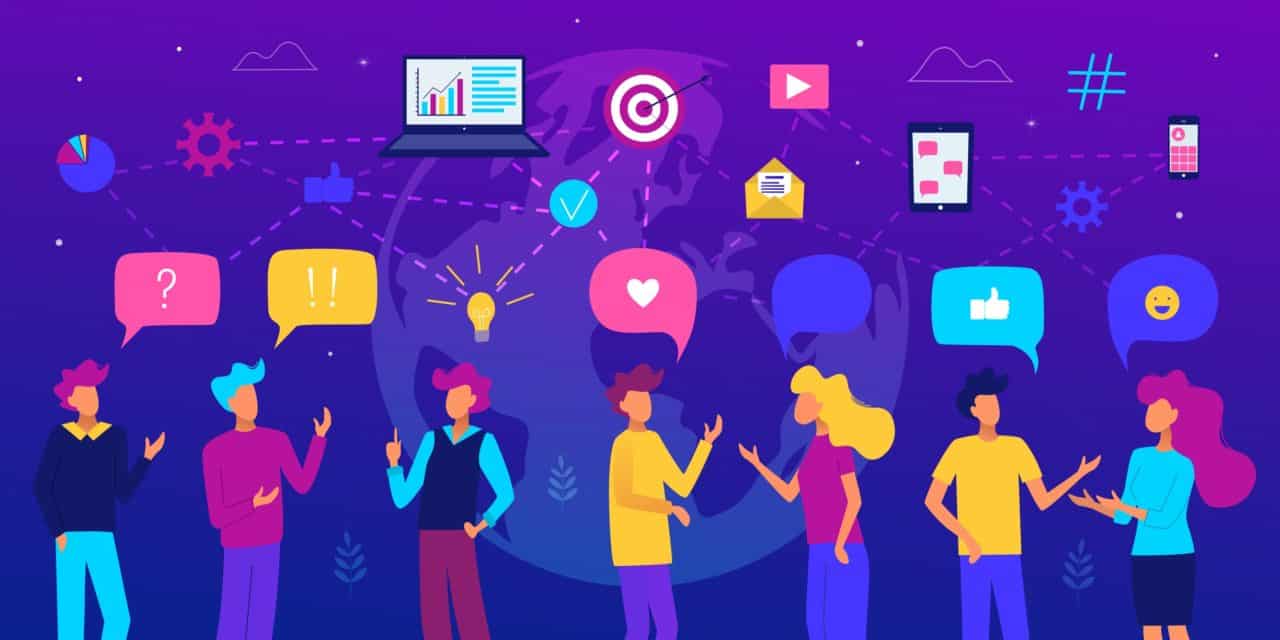
© Swietlana Malyszewa | Dreamstime.com
The IIASA stakeholder community also sheds new light on the value of the institute’s expertise in systems analysis for building international scientific partnerships, whether it be formal ones with my colleague Sergey Sizov and his science diplomacy expertise, or by facilitating research partnerships between our NMO countries and IIASA researchers.
With my colleague Monika Bauer, I am also learning about the future of stakeholder engagement and how to build virtual communities, like she’s doing with IIASA Connect:
“We are building the global systems analysis network on IIASA Connect. This tool allows colleagues, alumni, the institute’s regional communities, and collaborators to directly engage with each other and take advantage of the institute’s international and interdisciplinary network. It is something completely new for the organization,” she explains.
Our recent partnership with the Strategic Initiatives (SI) Program was aimed at better understanding the IIASA NMO countries and their individual research priorities for the next decades. I learned about local challenges and strengths and how countries have managed to move forward as a nation or by working hand in hand with their neighbors.
Coming from a research background, I am fascinated by the insights I am gaining working with IIASA communications colleagues on how to promote research and its impacts. I particularly enjoyed working with Ansa Heyl, helping IIASA experts build their policy brief submissions for the recent T20 Italy call for abstracts. As part of my skillset and center of interest, I aim to apply my science to policy skills here at IIASA to support the researchers and impacts of the amazing work done across the institute.
Having mostly worked with and for early career researchers for several years, I remain sensitive to their needs for career development opportunities. I am therefore excited to work with colleagues in the institute’s Capacity Development and Academic Training (CDAT) program to further define and support research excellence at IIASA, especially in the very promising next generation of systems scientists.
Few workplaces are so well connected and offer so many opportunities to develop such a broad range of skills as the IIASA Communications and External Relations team. As we are working towards fulfilling the IIASA Strategy’s aim of strengthening partnerships, I look forward to continuing to interact with IIASA researchers and supporting the institute’s goals of making sure the work done at IIASA positively impacts society. So come and chat with me!
Note: This article gives the views of the author, and not the position of the Nexus blog, nor of the International Institute for Applied Systems Analysis.
Feb 18, 2021 | Austria, Climate, Climate Change, Communication, Education, Health
By Thomas Schinko, Acting Research Group Leader, Equity and Justice Research Group
Thomas Schinko introduces an innovative and transdisciplinary peer-to-peer training program.
What do we want – climate justice! When do we want it – now! The recent emergence of youth-led, social climate movements like #FridaysForFuture (#FFF), the Sunrise Movement, and Extinction Rebellion has reemphasized that at the heart of many – if not all – grand global challenges of our time, lie aspects of social and environmental justice. With a novel peer-to-peer education format, embedded in a transdisciplinary research project, the Austrian climate change research community responds to the call that unites these otherwise diverse movements: “Listen to the Science!”
The climate crisis raises several issues of justice, which include (but are not limited to) the following dimensions: First, intragenerational climate justice addresses the fair distribution of costs and benefits associated with climate change mitigation and adaptation, as well as the rectification of damage caused by residual climate change impacts between present generations. Second, intergenerational justice focuses on the distribution of benefits and costs from climate change between present and future generations. Third, procedural justice asks for fair processes, namely that institutions allow all interested and affected actors to advance their claims while co-creating a low-carbon future. Movements like #FFF maneuver at the intersection of those three forms of climate justice when calling on policy- and decision makers to urgently take climate action, since “there is no planet B”.
Along with the emergence of these youth-led social climate movements came an increasing demand for the expertise of scientists working in the fields of climate change and sustainability research. To support #FFF’s claims with the best available scientific evidence, a group of German, Austrian, and Swiss scientists came together in early 2019 as Scientists for Future. Since then, requests from students, teachers, and policy and decision makers for researchers to engage with the younger generation have soared, also in Austria. Individual researchers like me have not been able to respond to all these requests at the extent we would have liked to.
In this situation of high demand for scientific support, the Climate Change Center Austria (CCCA) and The Federal Ministry of Education, Science and Research (BMBWF) have put their heads together and established a transdisciplinary research project – makingAchange. By engaging early on with our potential end users – Austrian school students – a truly transdisciplinary team of researchers as well as practitioners in youth participation and education (the association “Welt der Kinder”) has co-developed this novel peer-to-peer curriculum. The training program, which runs over a full school year, sets out to provide the students not only with solid scientific facts but also with soft skills that are needed for passing on this knowledge and for building up their own climate initiatives in their schools and municipalities. One of the key aims is to provide solid scientific support while not overburdening the younger generation who often tend to put too high demands on themselves.
Establishing scientific facts about climate change and offering scientific projections of future change on its own does not drive political and societal change. Truly inter- and transdisciplinary research is needed to support the complex transformation towards a sustainable society and the integration of novel, bottom-up civil society initiatives with top-down policy- and decision making. Engaging multiple actors with their alternative problem frames and aspirations for sustainable futures is now recognized as essential for effective governance processes, and ultimately for robust policy implementation.
Also, in the context of makingAchange it is not sufficient to communicate science to students in order to generate real-world impact in terms of leading our societies onto low-carbon development pathways. What is additionally needed, is to provide them with complementary personal and social skills for enhancing their perceived self-efficacy and response efficacy, which is crucial for eventually translating their knowledge into real climate action in their respective spheres of influence.
Recent insights from a medical health assessment of the COVID-19 related lockdowns on childhood mental health in the UK have shown that we are engaging in an already highly fragile environment. In addition, a recent representative study for Austria has shown that the pandemic is becoming a psychological burden. The study authors are particularly concerned about young people; more than half of young Austrians are already showing symptoms of depression. Hence, we must engage very carefully with the makingAchange students when discussing the drivers and potential impacts of the climate crises. Particularly since some of them are quite well informed about research, which has shown (by using a statistical approach) that our chances of achieving the 1.5 to 2°C target stipulated in the Paris Agreement are now probably lower than 5%. Another example of such alarming research insights comes in the form of a 2020 report by the World Meteorological Organization, which warns that there is a 24% chance that global average temperatures could already surpass the 1.5°C mark in the next five years.
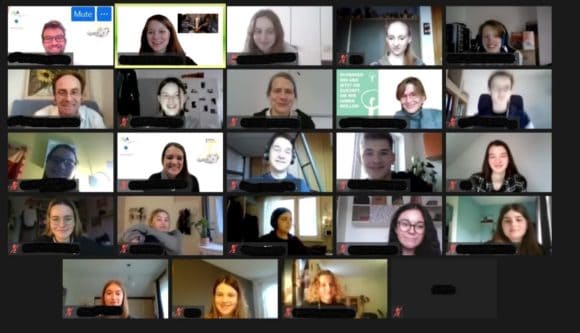
Zoom group picture taken at the end of the second online makingAchange workshop for Austrian school students. Copyright: makingAchange
The first makingAchange activities and workshops have now taken place – due to the COVID-19 regulations in an online format, which added further complexity to this transdisciplinary research project. Nevertheless, we were able to discuss some of the hot topics that the young people were curious about, such as the natural science foundations of the climate crisis, climate justice, or a healthy and sustainable diet. At the same time, we provided our students with skills to further transmit this knowledge and to take climate action in their everyday live – such as a climate friendly Christmas celebration in 2020. The school student’s lively engagement in these sessions as well as the overall positive (anonymous) feedback has proven that we are on the right track.
The role of science is changing fast from “advisor” to “partner” in civil society, policymaking, and decision making. By doing so, scientists can play an important, active role in implementing the desperately needed social-ecological transformation of our society without becoming policy prescriptive. With the makingAchange project, we are actively engaging in this transformational process – currently only in Austria but with high ambitions to scale-out this novel peer-to-peer format to other geographical and cultural contexts.
Note: This article gives the views of the author, and not the position of the Nexus blog, nor of the International Institute for Applied Systems Analysis.
Feb 16, 2021 | Communication, Data and Methods, IIASA Network
By Luke Kirwan, IIASA Repository and Open Access Manager
IIASA Repository and Open Access Manager Luke Kirwan explains the ins-and-outs of the Plan S policy towards full and immediate Open Access publishing.
With Plan S, which has been implemented from 1 January 2021, new Open Access requirements come into force for project participants, which are intended to accelerate the transformation to complete and immediate Open Access. This has implications for researchers obtaining funding from funders supporting Plan S, such as the Austrian Science Fund (FWF) or Formas (a Swedish Research Council for Sustainable Development).
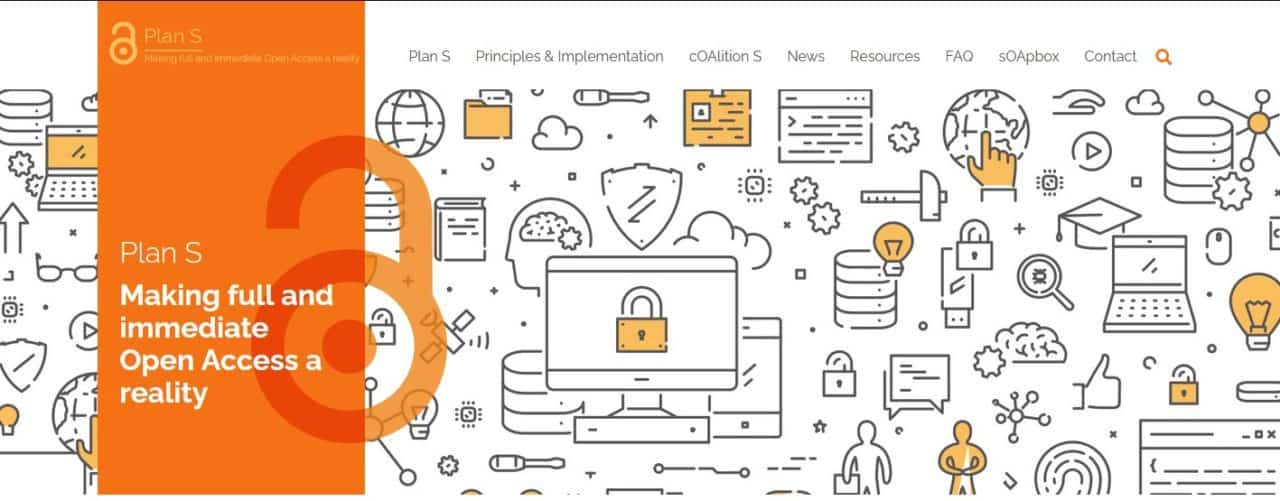
What exactly is Plan S?
Plan S is an initiative that aims to promote making research immediately open access without embargo periods or restrictions. It requires that, from 2021, scientific publications that result from research funded by public grants must be published in compliant Open Access journals or platforms. A number of national and international research bodies, including the FWF and the European Research Council (ERC), are working jointly on the implementation of Plan S and the promotion of open access research publication. A list of these funding bodies can be found here and more detailed information on the implementation of Plan S is available here.
 What you need to know
What you need to know
Starting from 1 January 2021, publications derived from research funded by Plan S research organizations must be made openly accessible immediately upon publication without any embargo period. This applies only to projects submitted after 1 January 2021. Furthermore, this material must be made available under a Creative Commons Attribution license (CC-BY). In some instances, a more restrictive license can be applied, but this must be discussed with the funding body.
 Further guidelines are currently being developed for publications that are not journal articles such as books and edited volumes. From 2021 onwards, it is important to closely check the requirements of research funders to ensure that projects are compliant with any open access requirements they may have.
Further guidelines are currently being developed for publications that are not journal articles such as books and edited volumes. From 2021 onwards, it is important to closely check the requirements of research funders to ensure that projects are compliant with any open access requirements they may have.
Papers published under Plan S funding has to include an appropriate acknowledgement. In the case of FWF funded research, it must for example follow the following format:
‘This research was funded in whole, or in part, by the Austrian Science Fund (FWF) [Grant number]. For the purpose of open access, the author has applied a CC BY public copyright license to any Author Accepted Manuscript version arising from this submission.’
Authors of papers published under Plan S funding will retain the copyright of their work, and will be providing journals with a license to publish their material rather than fully transferring copyright to them. Publishers that require a license to publish must allow the authors to make either the published version, or the accepted version, immediately available under an open license. No embargo period is permitted.
Routes to compliance
- Publish in an open access journal
- Make the accepted manuscript immediately available in an open access repository (like PURE) under a CC-BY license
- Publish in a subscription journal where IIASA has an open access agreement (For a list of IIASA’s current agreements please see here)
COAlition S has provided a journal checker tool so that you can check a journals compliance with the Plan S requirements.
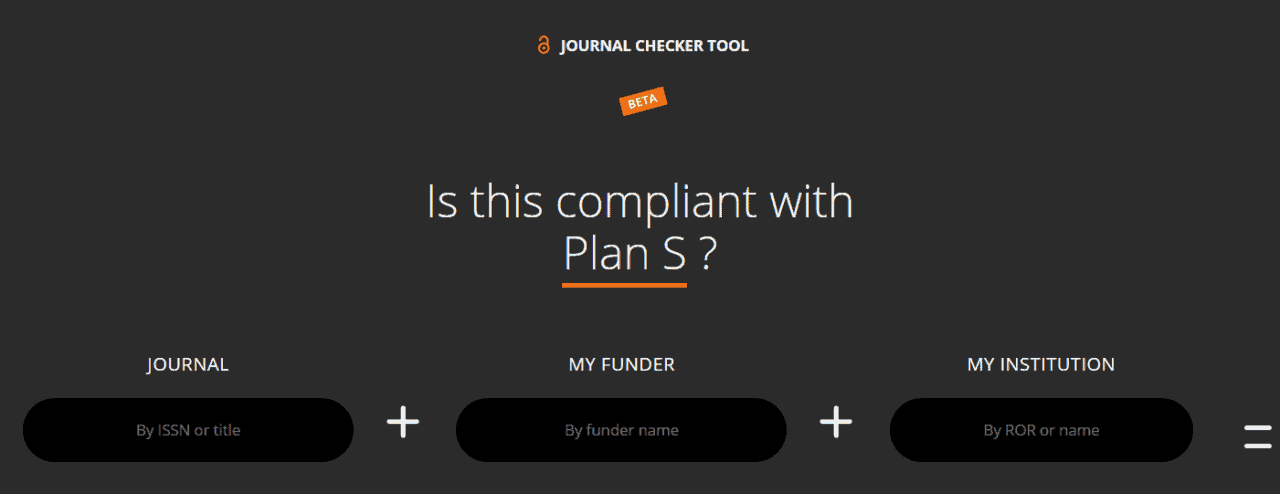
The FWF’s statement and guidelines for Plan S can be found here. The operation and success of Plan S will be reviewed by the end of 2024. For any further information or assistance, please contact the library.
Related links:
Science family of journals announces change to open-access policy (Jan 2021)
Nature journals reveal terms of landmark open-access option (NOV 2020)
Plan S toolkit (coalition S website)
Note: This article gives the views of the author, and not the position of the Nexus blog, nor of the International Institute for Applied Systems Analysis.
Jan 13, 2021 | Communication, Egypt, Women in Science
By Shorouk Elkobros, IIASA Science Communications Fellow
Shorouk Elkobros shares her love for science communication and why she thinks it is pivotal for humanity.
Early 2020, I saw viral GIFs about social distancing and flattening the curve. I remember how useful and accessible it felt to have science communicated in such a fun and non-jargon way, especially during a global crisis.
In today’s post-truth world, misinformation campaigns travel fast. Hence, science communication’s role becomes pivotal to humanity. Anne Glover, the president of the Royal Society of Edinburgh, once said that “research not communicated is effectively research not done.”
What is science communication?
Science communication is the practice of educating and raising awareness of science-related topics. Science communicators, therefore, aspire to bridge the gap between science and the public and to inform decision makers.
But is it that easy?
You guessed it ̶ it is not. However, it is a challenge one would love to take on. Science communication is a constant game of problem solving.
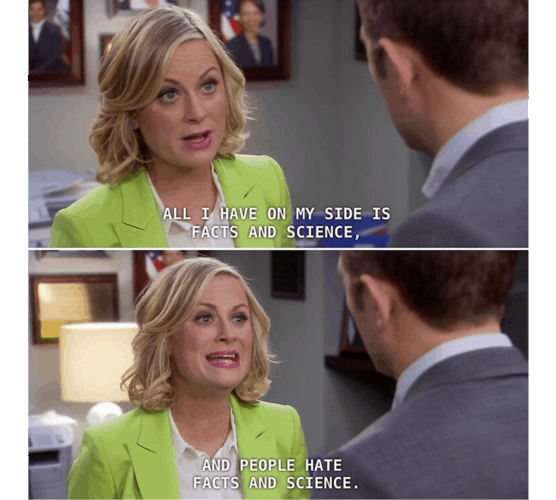
Meme from the American sitcom television series Parks and Recreation | awwmemes.com
It is never about dumbing down information but rather about making it concise and clear. It requires a decent amount of practice, careful attention to language, and a deep understanding of the audience.
Enticing readers with clickbait information and sensationalized or misleading facts has almost pushed the reputation of science communication under the bus. Examples include the COVID-19 conspiracy theories that emerged amid the pandemic or climate change deniers’ campaigns that share fake scientific news to mislead the public.
Why I love science communication?
I come from a science background and a love for visual storytelling. After earning my master’s degree in climate sciences, I chose to become a science communicator because it brings me joy to make science relatable and fun for the public. For me, science communication is a great way to mainstream climate action.
In 2019, I worked closely with the CLICCS B1 team at the University of Hamburg, Germany, where I investigated how our imaginations of possible and plausible climate futures are socially and culturally constituted and embedded in broader visions of the future and belief systems. One thing I learned was that the mainstream media either tones down the climate crises or spreads alarming and apocalyptic messages. It was an eye-opening experience to investigate how climate change is communicated in the media and to recommend amends. However, I always wanted to practice what I preached. I was lucky to volunteer as an editor on the Climate Matters blog and as a video editor in conferences such as Tropentag 2019. The sense of satisfaction that I felt every time I worked on an article or a video made me realize that I want to pursue a career in science communication.
IIASA Science communication
In 2020 I was looking for opportunities to embark on a science communication learning journey to become a better science writer and a better storyteller. Having the chance to do a Science Communication Fellowship at IIASA was an experience that I hold near and dear to my heart. This program is targeted towards early career science communicators who want to sharpen their science communication skills. It was the perfect opportunity for me to transition from academia to the practical field.
Working closely with researchers to produce content on blogs, videos, and news-in-brief articles in the Options magazine 2020 winter edition gave me an excellent perspective on environmental, economic, technological, and social change all around the globe. Knowing that my work can provide the needed information to policymakers is so rewarding because I know it can make a change in the years to come. Interviewing early career researchers and IIASA Young Scientists Summer Program alumni, and listening to them discussing their work and future aspirations was awe-inspiring. I think my favorite project was producing a video on the biodiversity work done at IIASA because I was able to look beyond the research and highlight the researchers behind it. I figured one way people would relate to the science is if I put a human face to it.
Working as part of the IIASA communications team has been a blast. For this blog, I asked my team members why they love science communication, and here are some of my favorite replies:


 Communicating research addressing issues such as food and water security, biodiversity, or climate change can boost regenerative economies and decentralized renewable energy systems. It then becomes pivotal for humanity to give a voice to young people, grassroots movements, and people of color. Historically, researchers involved in outreach gave science communication its modern shape. Today, I think we live in a golden age of science communication. There are more thought-provoking science stories than ever before. Scientists blogging about science, science communicators using social media to promote recent publications, and storytellers creating science-oriented videos or designs, are all doing magnificent work, and I am lucky to count myself as one of them.
Communicating research addressing issues such as food and water security, biodiversity, or climate change can boost regenerative economies and decentralized renewable energy systems. It then becomes pivotal for humanity to give a voice to young people, grassroots movements, and people of color. Historically, researchers involved in outreach gave science communication its modern shape. Today, I think we live in a golden age of science communication. There are more thought-provoking science stories than ever before. Scientists blogging about science, science communicators using social media to promote recent publications, and storytellers creating science-oriented videos or designs, are all doing magnificent work, and I am lucky to count myself as one of them.
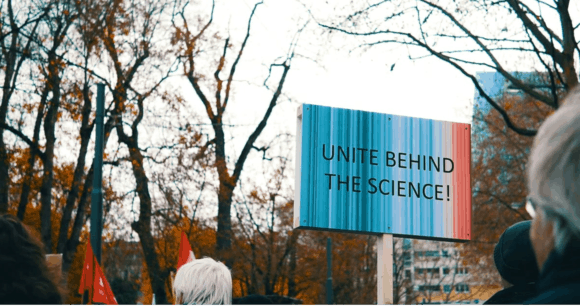
@ Lennart Wittstock | Pexels.com
Note: This article gives the views of the author, and not the position of the Nexus blog, nor of the International Institute for Applied Systems Analysis.
Sep 2, 2020 | Communication, Sustainable Development, Systems Analysis
By Rachel Potter, Communications Officer in the IIASA Communications and External Relations Department.
Several members of the IIASA Strategic Taskforce share their views on the bold new IIASA strategic agenda, how it came to be, and what it promises for the future.
What will the world look like in 2030 and beyond? We are living in extraordinary times and our rapidly transforming planet faces multiple global sustainability challenges, threats, and opportunities. How will research institutes like IIASA continue to make meaningful contributions to address these complex issues?
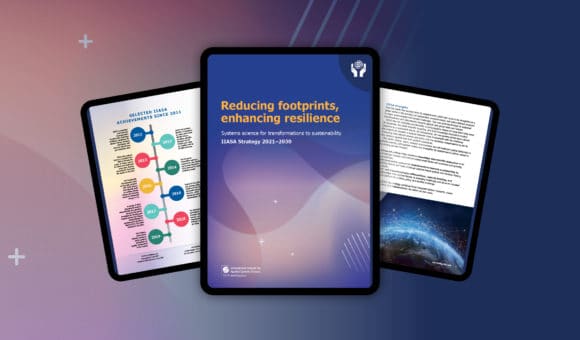
This is precisely what IIASA has been exploring over the past 18 months while formulating its strategic direction for the next 10 years. Through institute-wide consultations, a strategic taskforce was entrusted with coordinating the process that led to “Reducing footprints, enhancing resilience” – the institute’s ambitious new strategy for 2021-2030 that positions IIASA as the primary destination for integrated systems solutions and policy insights.
A bottom-up inclusive approach
The strategy consultation process was very different to those previously undertaken at IIASA. Acting Transitions to New Technologies Program Director and Energy Program researcher, Shonali Pachauri describes the rationale behind the process:
“While in the past strategic planning had largely been driven by the directorate and program directors, this time, mid-career scientists were to drive the process forward. It was not meant to be one researcher from each program on the taskforce, but it ended up being something like that, so we had a broad representation of disciplines from across the institute. The taskforce was responsible for developing the scientific content of the plan and we did this in an inclusive manner with input from staff through workshops, an online platform, and both informal and formal meetings.”
Reflecting our changing world
The UN Sustainable Development Goals (SDGs) established in 2015, are clearly reflected in the new strategy. Linda See, a researcher in the Ecosystems Services and Management Program, explains:
“We have always worked on sustainable development and transformations but this is now more of a focus compared to the previous strategy. The emphasis is on using our expertise as systems scientists to explore the interrelationships between different SDGs and how there can be synergies and trade-offs in different scenarios to achieve them.”
“Another key shift is that the new strategic plan takes a human-centered approach, placing more emphasis on how people are a core component of pathways towards sustainability and resilient societies,” adds World Population Program Deputy Program Director, Raya Muttarak.
Fellow taskforce member and Acting Water Program Director, Yoshihide Wada, agrees:
“This focus on social science, governance, and human behavior came out of our consultations with staff. IIASA researchers really want to go in this direction. People increasingly understand that with the climate and environmental goals in particular, it can’t only be technology and bioeconomy, it has to be about lifestyles as well, which means we need to strengthen our ability to analyze behavior and identify which levers to pull to encourage lifestyle changes.”
“There is also a stronger focus on biodiversity. The importance of this was borne out of the current COVID-19 crisis. Looking at the origin of the virus and how the pandemic has been aided by the loss of biodiversity – it’s evident that this is crucial,” adds Manager of Library and Knowledge Resources, Michaela Rossini.
Building on strong foundations for continued innovation
Taskforce members agree that the new strategy consolidates the unique strengths of IIASA while providing the space and flexibility for innovation.
“IIASA is unique not only because of our excellence in the fields of energy, environment, climate change, and ecosystems services but also because we have strong, empirically-based analyses and studies from social sciences, which can quantify and forecast relevant demographic, social, and economic dimensions in systems analysis,” says Muttarak.
“I think the new strategy pushes the interdisciplinarity at IIASA even further. The new program structure is very integrated. This is vital to facing today’s sustainability challenges. There are big aspirations in the strategy and it’s our responsibility to translate this into practice. As scientists, we have to be open to change and include elements that we may never have thought of. It makes things very interesting. It makes innovation happen,” Wada adds.
Pachauri explains that IIASA was created as a science-to-policy interface in 1972 and its purpose has always been to bridge divides: both between disciplines and across transnational boundaries. The new strategy really builds on this history. While the institute innovates a lot in terms of models and methods, this always happens through an applied lens of doing something that will ultimately feed into policy.
One of the institute’s key strengths is its relationships with its National Member Organizations and strong global network. These relationships are what make it possible to tackle the real-world problems society faces today. The flexibility to work across networks, countries, and different levels of government is strongly emphasized in the strategy.
A bit like family
According to Muttarak, the process of drawing up the new IIASA strategy has been a great opportunity to work with people from different programs and units. Not only has this allowed everyone involved to get to know their colleagues better, but it has also enhanced team members’ understanding of systems analysis and the importance of IIASA.
“It was challenging and rewarding, a bit like family!” comments Pachauri. “There was a lovely dynamism in the team and although we had a Chair, everyone had a chance to lead at various times in the process.”
“As the only non-scientist I found working on the taskforce invaluable – understanding more about IIASA research and getting to know scientists from across the institute has really enhanced my awareness of what they do and what their needs are going forward,” Rossini concludes.
The full IIASA Strategic Taskforce is comprised of: Luis Gomez Echeverri, Matthias Jonas, Mauricio A. Lopes, Junko Mochizuki, Raya Muttarak, Shonali Pachauri, Michaela Rossini, Linda See, Thomas Schinko, Yoshihide Wada, and Fabian Wagner.
Note: This article gives the views of the author, and not the position of the Nexus blog, nor of the International Institute for Applied Systems Analysis.
Nov 27, 2019 | Climate, Climate Change, Communication, Environment, IIASA Network, Women in Science
Award-winning climate communicator Katharine Hayhoe, an atmospheric scientist, professor of political science at Texas Tech University, and director of the Climate Center, discusses the importance of effective science communication in overcoming barriers to public acceptance of climate change in a recent interview with Rachel Potter, IIASA communications officer.
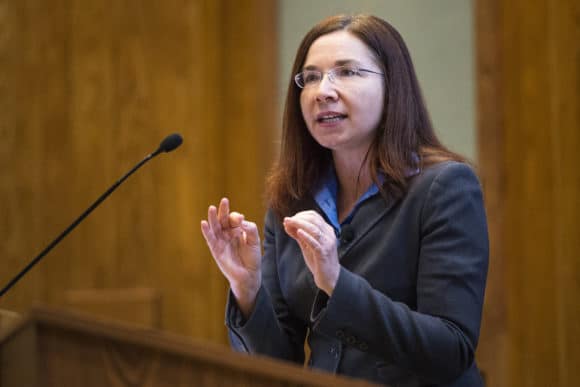
© Chris.Soldt | Boston College.MTS.Photography
Q: Can you tell us a bit about your specific areas of research as a scientist?
I study what climate change means to people, in the places where we live: how it is affecting our water supply, our health, our air quality, the integrity of our infrastructure, and other human and natural systems. Often when people think about climate change they think about polar bears or people who are living on low-lying islands in the South Pacific. I bring climate change down from the global scale to the local level because when we understand that it is an ‘everything issue’, that’s when we understand that we need to act.
Q: You have been widely recognized as a remarkable communicator. What do you see as key to effective science communication?
I believe effective communication begins with connecting and identifying shared values, and ends with talking about solutions. With climate change, sometimes people are overt in their opposition by outright saying the science isn’t real. More often however, it is passive opposition where people feel the problem is too big and there is nothing they can do to fix it. We need to present people with solutions that are practical and viable – in other words, actions that they can engage in.
Q: Why is science communication important?
Science communication explains how the world works. Today we are conducting an unprecedented experiment with our planet, the only one we have. Understanding this is one of the most important things anyone can do as a human being living on Earth.
Q: Can you briefly outline what you see as trends in public and political opinion with regard to human-induced climate change?
Our world is becoming increasingly polarized and we are dividing into tribes. It is happening with many issues and in many places around the world. When the world is changing so quickly, many of us feel uncomfortable with the rate of change, so we retreat to a more tribalized, divided society where we feel comfortable. But by doing so, we focus on the tiny fraction of what divides us rather than the vast preponderance of what unites us, because it makes us feel more secure to do so.
Climate change is a casualty of this fracturing, tribalism, and polarization that is happening – most notably in the US because there are only two political parties, so the tribalization there is much more obvious. In the US, the best predictor of whether people agree with the facts that: climate is changing, humans are responsible, and the impacts are serious, is not how much they know about science, it’s simply where they fall on the political spectrum. This politicization of science is also happening in the UK, Austria, across Europe, Canada, Australia, and Brazil.

© IIASA Katherine Hayhoe with members of the IIASA Women in Science Club
Q: How can this polarization and the barriers to dealing with climate change be challenged?
Climate change is a human issue – it doesn’t care if we are liberal or conservative, rich or poor, although the poor are being more affected than the rich. It affects all of us and almost everything we care about. For that reason, we must emphasize what unites us rather than what divides us. We need to challenge the idea that the solutions to climate change pose a bigger threat to our wellbeing, our comfort, the quality of our lives, our identity and who we are, than the impacts.
We must expose the myths that underlie inaction around climate change and examine them in an objective way. Will it really ruin our economy to fix climate change? Will it take us back to the Stone Age? If we don’t tackle the myths directly, they will continue to thrive in our sub-conscious. For example, in Canada there is an idea that a carbon tax will destroy the economy. I like to point out that there were four provinces in Canada that had a price on carbon before it became a federal policy, and those four provinces have led the country in terms of economic growth and output.
Q: What part do you see IIASA playing in being able to build bridges between countries across political divides?
IIASA stands in a key position at a pivotal time. It is a truly international organization in terms of its mandate, structure, governance, and the people that work here. Climate change is a global problem and IIASA is a global institution that can offer both big-picture and regionally-specific insights into climate impacts and solutions.
Katharine Hayhoe visited IIASA on 4 October 2019 to give a lecture titled, Barriers to Public Acceptance of Climate Science, Impacts, and Solutions, to IIASA researchers and to meet with the IIASA Women in Science Club. IIASA has a worldwide network of collaborators who contribute to research by collecting, processing, and evaluating local and regional data that are integrated into IIASA models. The institute has 819 research partner institutions in member countries and works with research funders, academic institutions, policymakers, and individual researchers in national member organizations.
Note: This article gives the views of the author, and not the position of the Nexus blog, nor of the International Institute for Applied Systems Analysis










 Communicating research addressing issues such as food and water security, biodiversity, or climate change can boost regenerative economies and decentralized renewable energy systems. It then becomes pivotal for humanity to give a voice to young people, grassroots movements, and people of color. Historically, researchers involved in outreach gave science communication its modern shape. Today, I think we live in a golden age of science communication. There are more thought-provoking science stories than ever before. Scientists blogging about science, science communicators using social media to promote recent publications, and storytellers creating science-oriented videos or designs, are all doing magnificent work, and I am lucky to count myself as one of them.
Communicating research addressing issues such as food and water security, biodiversity, or climate change can boost regenerative economies and decentralized renewable energy systems. It then becomes pivotal for humanity to give a voice to young people, grassroots movements, and people of color. Historically, researchers involved in outreach gave science communication its modern shape. Today, I think we live in a golden age of science communication. There are more thought-provoking science stories than ever before. Scientists blogging about science, science communicators using social media to promote recent publications, and storytellers creating science-oriented videos or designs, are all doing magnificent work, and I am lucky to count myself as one of them.



You must be logged in to post a comment.